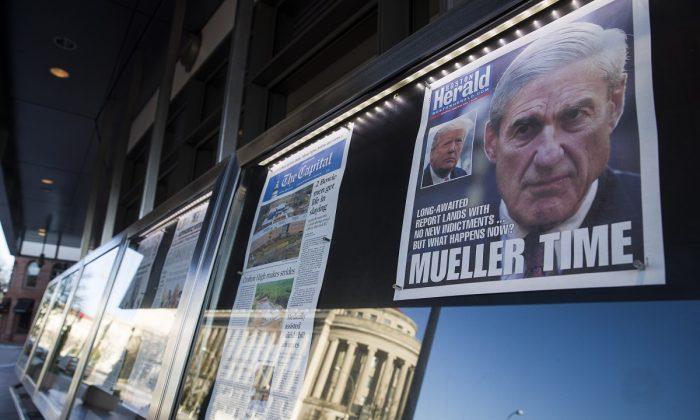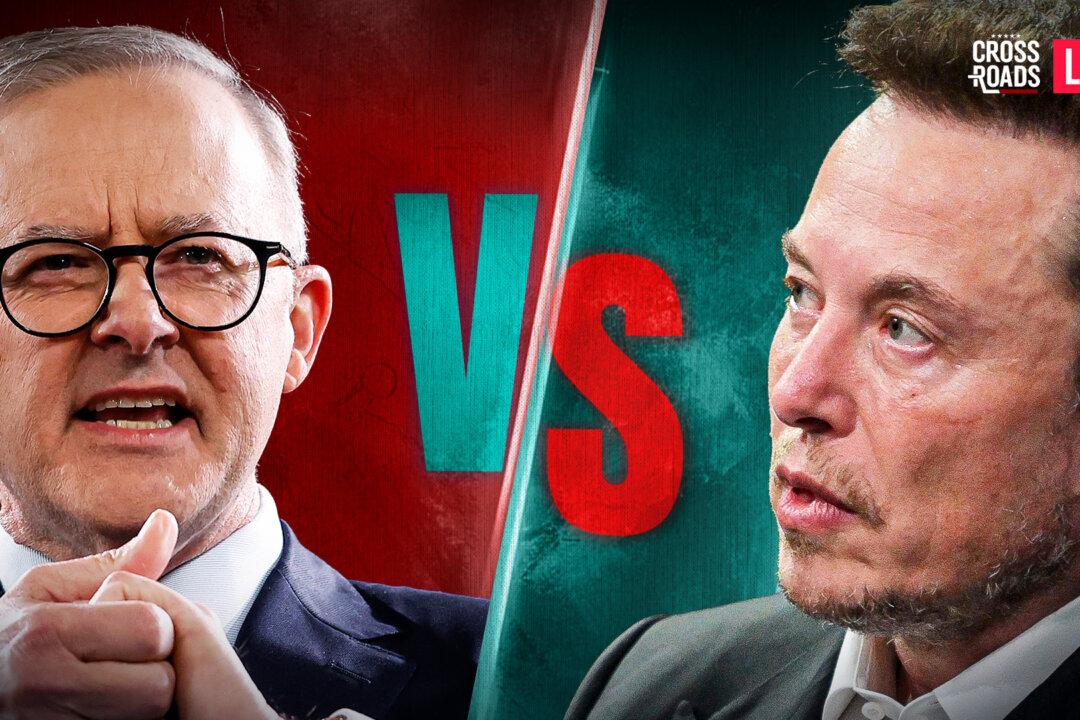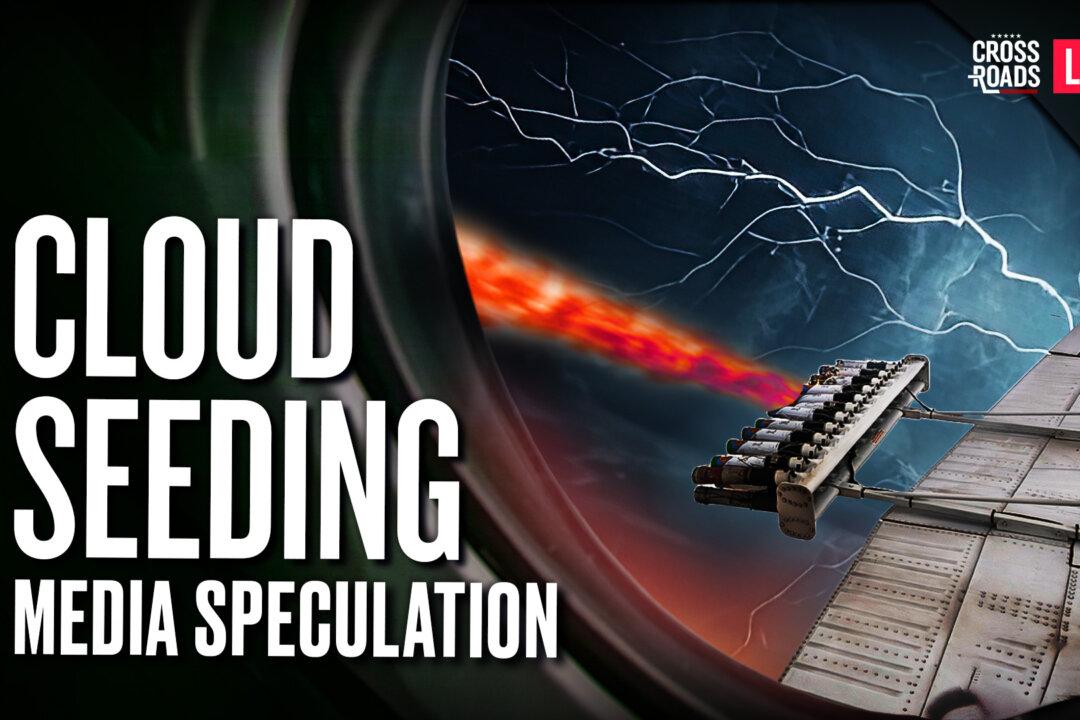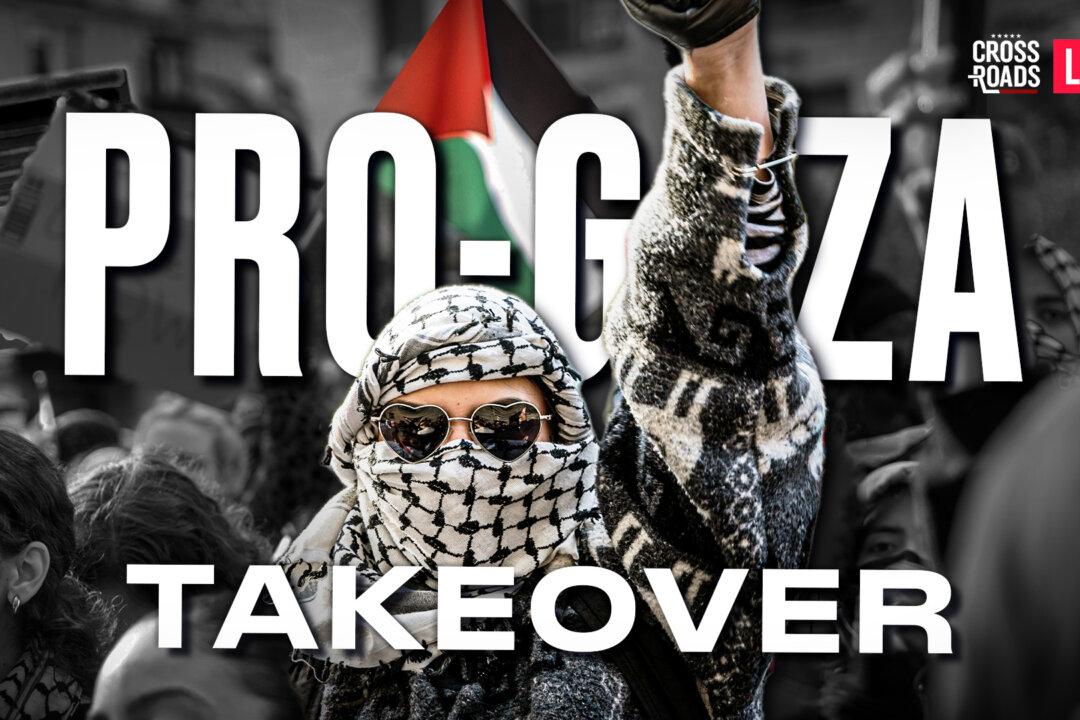In just two years of Donald Trump’s presidency, the terrorist group ISIS has been nearly eliminated, black and Hispanic unemployment levels have reached all-time lows, the economy is growing at a rate deemed impossible under the Obama administration, the United States has become the world’s largest crude oil producer, and manufacturing is returning to the country—among an array of other successes, too numerous to list here.
Despite these successes, however, the Trump administration has been under constant attack by a collective of legacy news outlets, political actors, and policy-focused front organizations that have created a constant picture of chaos in the United States and in the White House.
The narratives used to discredit Trump have been debunked one after another. Criticisms of “anti-Semitism” have been turned around to expose anti-Semitism among leftist politicians and news outlets, the “Trump–Russia” scandal has transformed into the “Spygate” scandal of political espionage under Obama, and many other accusations have ended with similar results.
In the latest chapter of these chaos operations, House Democrats are voting to hold Attorney General William Barr in contempt of Congress for his refusal to not release the fully unredacted report from special counsel Robert Mueller. Barr was not required to release even the information he did, and cannot release the redacted parts because they relate to grand jury information on ongoing cases.
But what’s important to remember here is that none of this matters. This is not about Barr, nor the Mueller report, nor foreign influences on the elections.
This is about a political faction desperately trying to hold onto power. Its only hope is to cripple the Trump presidency as much as possible while controlling public perceptions enough to flip the coming 2020 elections. Understand this, and everything you’re witnessing will make sense.
For them, facts don’t matter. The issues don’t matter. What we’re witnessing is just a chaos operation; the purpose is to manufacture an illusion of chaos.
Above and Below
A major tool in this is the “above and below” tactic. This works by manufacturing crisis and response, then subverting through the Hegelian dialectic process of “thesis, antithesis, synthesis,” in order to control the direction of a process set in motion. The “below” part works through manufactured incidents and protests; the “above” then can react to these.For example, groups on the ground (below) create an incident; media (above) then amplify the incident to create public demand (below); and political factions (above) then react to the public demand.
This process creates a feedback loop, in which reactions from politicians give fuel for more news stories, which further agitate public opinion—to which political groups can again respond. When the process reaches a boiling point, with a strong enough public demand, the political factions orchestrating the illusion can use it to justify political intervention through policy.
We recently witnessed this tactic used to manufacture the Trump–Russia scandal. The Clinton campaign and the Democratic National Committee financed the creation of opposition research through the firm Fusion GPS. That opposition research took the form of the now-debunked Steele dossier, which political operatives distributed to news outlets and spread throughout the U.S. government.
The Steele dossier was used by news outlets and political operatives to claim that Trump had colluded with Russia. This started waves of public panic, which these same political operatives used to then call for investigations of Trump, and later, to undermine his presidency.
The “above and below” tactic comes from communist movements. It was described in 1957 by Czech Communist Party theoretician Jan Kozak as a method for small groups to gain power by agitating society from two directions: one faction in government and another on the streets.
“One way to exert ‘pressure from below,’ as Kozak explained, was to fill the streets with rioters, strikers, and protesters, thus creating the illusion of a widespread clamor for change from the grassroots,” state authors David Horowitz and Richard Poe in their book “The Shadow Party.”
“Radicals in the government would then exert ‘pressure from above,’ enacting new laws on the pretext of appeasing the protesters in the street—even though the protesters (or at least their leaders) were themselves part of the plot.
“The majority of the people would have no idea what was going on. Squeezed from ‘above’ and ‘below,’ most would sink into apathy and despair, believing they were hopelessly outnumbered by the radicals—even though they were not.”
Emotional Agitation
When Mueller completed his investigation into Trump–Russia collusion, Barr concluded that there had been no obstruction and no collusion. The Mueller report also showed there was never any evidence that Trump colluded with Russia, which should have raised questions about how the investigation was launched in the first place.Yet, rather than admit to the public that they had lied to them for close to two years, the legacy news outlets and political operatives behind this manufactured scandal merely created a new scandal—going after Barr for contempt for not publicly releasing information from a grand jury investigation.
This, of course, won’t go anywhere. Barr is prohibited by law from disclosing info on an ongoing grand jury investigation, and he wasn’t required to declassify the Mueller report in the first place. But again, addressing the surface issue is not the purpose.
What’s at play is merely a perception-management campaign for incident response. The incident was the Mueller report showing that news outlets and politicians lied to the public. The perception-management campaign aimed to ensure the media’s and operatives’ nearly two-year-long spreading of disinformation, agitating public emotion, doesn’t turn the public against them.
They needed a way to keep some credibility as their narrative crumbled, and to maintain the emotions they had instilled in their base. Their attacks on Barr are meant to divert public attention and emotion, in order to maintain the public outrage they helped sow.
This public outrage is strategically important for the left’s political power. Socialism is dependent on having a group that the public is told to hate and to struggle against.
When it comes to social issues, part of the purpose of agitation propaganda is to create emotional memory—to cause people to react to set issues with emotion rather than logic. The agitator will then direct this rage by latching it onto social issues, which can be used to form policy. Then, any attack on the social issue becomes a trigger for the emotional memory.
Political Terrorism
After the public has been emotionally agitated, systems then are established to maintain the false narratives that created the agitation—lest the truth render people rational.This takes the form of political correctness and political labels to launch attacks on people who go against the narratives. This is enforced by all the main players of the political faction—including by celebrities, politicians, internet platforms, and legacy news outlets.
Today, if a person posts a tweet that goes against a narrative, they can be banned from Twitter, as we saw with actor James Woods. He wrote, “If you try to kill the king, you best not miss. #HangThemAll,” in what was clearly a commentary on the effort to delegitimize Trump’s presidency with the Russia collusion story.
If a person acts in a way that catches the leftist outrage, he or she risks having leftist politicians and news outlets publicly defaming them in order to destroy their reputations and personal lives, as we saw with Covington Catholic High School student Nicholas Sandmann, who was falsely accused of disrespecting an elderly Native American.
Under the now disproven Trump–Russia scandal, for example, outlets that questioned the narrative were accused of spreading fake news. The same applied to outlets that reported on the Spygate scandal, in which the Obama administration spied on the Trump campaign. Even though Spygate can now be verified, it is still described on Wikipedia as a “conspiracy theory by Donald Trump.”
This acts as a form of political terrorism. By attacking people at any level of society—from celebrities to high school kids—the left sends the message that anybody can be publicly destroyed.
This terrorism is meant to silence people and to force them to fall in line. Under political terrorism, people become too afraid to voice questions about established narratives, or to publicly oppose political issues.
These tactics again pull from communist systems. Mao Zedong framed this concept of “political correctness” in 1967, with the idea that anyone who supports communist policies is politically correct, and anyone who opposes them should be attacked. We also saw it with the Marxist idea of “ideology,” in which anything that stands against it is viewed as opposition to be destroyed by any means.
Former Polish Minister of Education Ryszard Legutko described the effect of this belief in his book “The Demon in Democracy: Totalitarian Temptations in Free Societies.“ Under communism, these types of political attacks ”practically put an end to any form of intellectual argumentation. No one argued, but either accused someone of ideological treason or defended himself against such a charge.”


![[LIVE 4/26 at 10:30AM ET] New Push Started for Global Digital Currencies](/_next/image?url=https%3A%2F%2Fimg.theepochtimes.com%2Fassets%2Fuploads%2F2024%2F04%2F19%2Fid5633115-0426-1080x720.jpg&w=1200&q=75)


